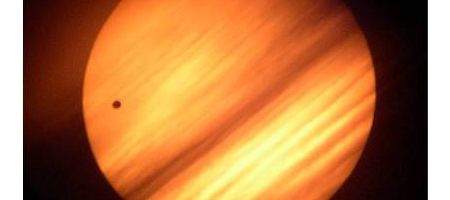In a little over a month’s time, sky-watchers will have what’s likely to be a once-in-a-lifetime experience, seeing Venus pass across the face of the sun.

On 5 and 6 June this year, Venus will spend about six hours visible as a small black dot on the sun’s surface, for the last time until 2117.
Venus and the Earth line up with the sun only rarely, because the two orbits are at a slight angle to each other, meaning that generally Venus passes below or above the sun. Transits occur in pairs separated by eight years – the last one was in 2004 – with the gap between pairs alternating between 105.5 and 121.5 years.
In 1716, Edmond Halley proposed using a transit of Venus to predict the precise distance between the Earth and the sun – a suggestion that led to literally hundreds of expeditions all over the world to observe the 1761 and 1769 transits. James Cook famously watched it at a site that’s still called Point Venus on Tahiti.
Jay M Pasachoff, an astronomer at Williams College, Massachusetts, says he’s looking for a phenomenon called the ‘black-drop effect’. This is a strange, dark band linking Venus’s silhouette with the sky outside the sun that appears for about a minute, starting just as Venus first enters the solar disk.
Writing in Physics World, Pasachoff says that observations of the transit will help astronomers who are looking for extrasolar planets.
“Doing so verifies that the techniques for studying events on and around other stars hold true in our own backyard,” he says.
“In other words, by looking up close at transits in our solar system, we may be able to see subtle effects that can help exoplanet hunters explain what they are seeing when they view distant suns.”
As well as making Earth-based observations, scientists in France will be using the Hubble Space Telescope to watch Venus’s transit very slightly darkening the moon. Pasachoff and hiscolleagues even plan to use NASA’s Cassini spacecraft, now orbiting Saturn, to see a transit of Venus from the planet on 21 December.
“We are fortunate in that we are truly living in a golden period of planetary transits, and it is one of which I hope astronomers can take full advantage,” he says.






